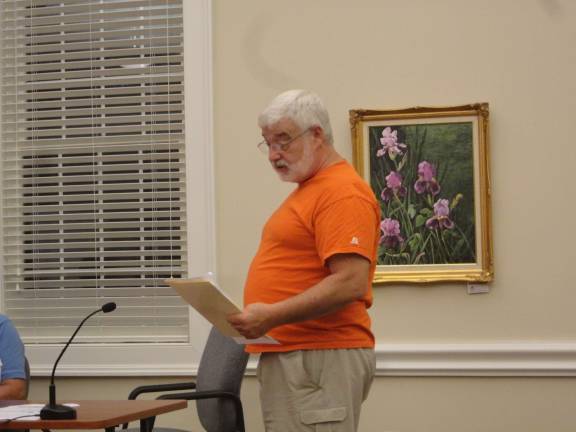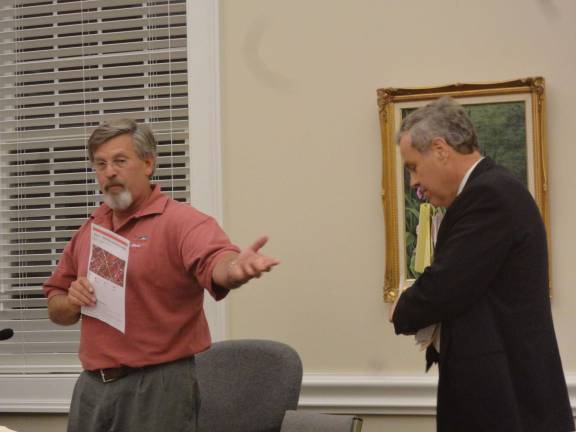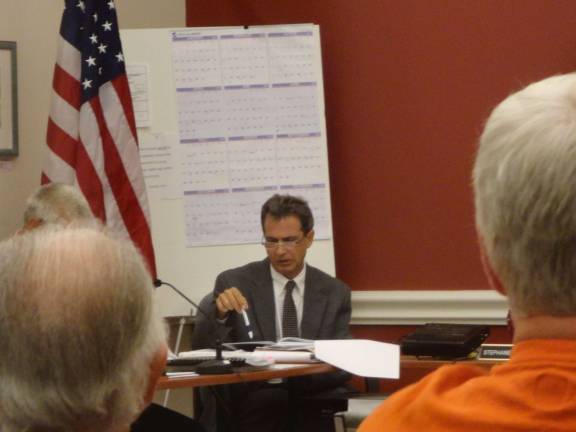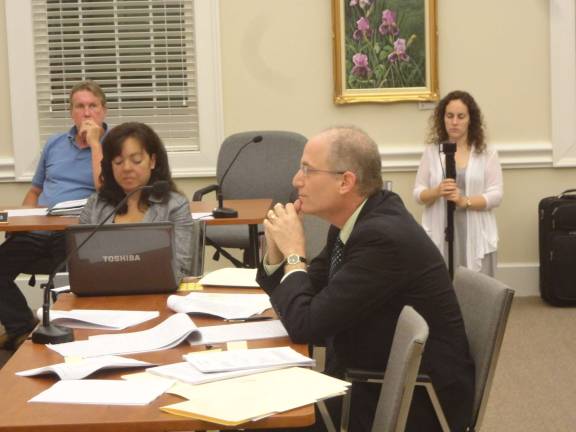Lafayette land board says no to Verizon cell tower




LAFAYETTE — After a four-month application process, Lafayette’s Land Use Board voted 4-3 to deny a Verizon Wireless cell tower at 245 Beaver Run Road.
The installation would have been a cash cow for Tom Heathwood, who lives on the property. Verizon would have paid him $2,000 per month for the use of his land. Any additional cellular carriers that used the pole would pay him $1,500 per month, allowing for a total of $8,000 per month if all five major carriers used the installation.
Heathwood said he was very surprised when Verizon contacted him regarding the installation. “I thought it was my brother playing a joke on me,” he said.
The proposal to approve a 110-foot monopole structure was motioned by board member Jeffrey Fette — who is not a Lafayette resident, but sits on the Land use Board due to his role as township zoning officer — and included a camouflaged tree design, forest brown coloring and six-foot fencing around the roughly 1,500-square-foot complex, among other stipulations. Verizon Wireless also offered to add Lafayette Fire Department and EMS radio antennas to the structure free of charge, as well as give them space for radio equipment in the surrounding structure.
The motion was seconded by Peter Randazzo. Board president Kevin O'Learny also voted in favor. Robert Taylor, Carl Luthman, Tamara Didyk and Donald Leuthe voted against the motion.
The proposal would have required five variances, including two use variances, a height variance, a variance to overrule a township driveway slope ordinance, and a variance to allow more than one principal structure on one lot. A possible sixth variance, necessary if the structure extended above the township’s ridgeline, was deemed unnecessary after a concession from the applicant to subtract from their original 135-foot height requirement.
One “stumbling block” for the no voters on the board, according to Taylor, was that Verizon Wireless did not appear to make reasonable effort to look into a possible alternate site after objections were raised by the public due to the residential location of the proposed site. A location suggested by both the public and some of the board was the Shotmeyer Farm, which already is approved for the county’s largest solar facility. Many have voiced concerns over the last four months that the farm would be a more suitable location due to the already-approved industrial setting.
Steve Race, resident of 247 Beaver Run Road whose primary dwelling would be just more than 400 feet from the installation, said he received an email confirmation from owners of the Shotmeyer farm confirming that they would be interested in the installation. The testimony was disallowed, however, as no one from the farm was present at the meeting.
Before the vote, Land Use Board attorney Ursula Leo pointed out that it would be “disingenuous” for the board to identify an alternate site which would still require a use variance.
Citing case law from an Ocean County Cellular lawsuit, Verizon Wireless attorney Richard Schneider advised the board that “‘Zoning Boards do not have carte-blanche power to reject an application based on conjecture that a possible alternate site is both suitable and available’” and that forcing the applicant to “engage in a goose-chase” with the Shotmeyer property would be in direct contradiction to that decision.
Public comments
Several members of the public and town experts provided testimony on the installation.
Leading the charge were Race and his attorney, William Haggerty, who claimed fires from such towers and ill effects from radiation were two main reasons to deny the application. Living with the fear of fire in an installation in a densely-wooded area less than 400 feet from his property would be “an unreasonable burden” for he and his family to live with, Race said.
Mike Toepher, an area resident and air-conditioning contractor with experience working in cell towers since 1996, said he has only ever seen two fires in such installations — stemming from the air conditioning units — and both were “contained within the structure,” he said. Toepher also testified he has had no ill health effects from working in the installations six hours per day, five or six days per week.
Schneider also reminded that board Verizon had proved their burden by inviting experts in the fields of radio frequency and radiation to testify at previous meetings.